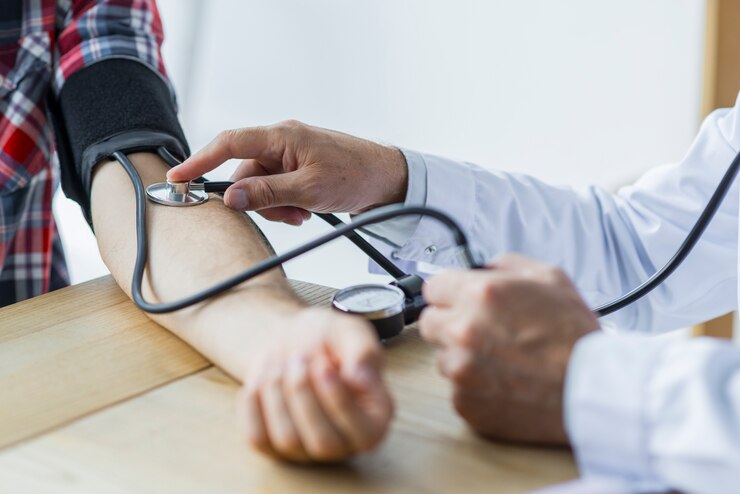7 Essential Health Tests and Screenings to Be Done Every Year
Getting regular health tests is essential. It can help you stay on track with your overall health and identify problems early to be treated before they get worse.
Getting a yearly physical examination is standard practice in the United States—and it should be part of your routine too! But what exactly happens at these check-ups?
How do they work? And who should be responsible for those appointments? This article will cover what’s involved in annual health screenings, how often you should see a doctor between visits, who pays for them, and more!
Why Are Regular Health Tests Important?
Health check-ups are essential for detecting any diseases or health problems you may have. It helps your doctor keep track of your overall health and prevent future health problems.
Having consistent health check-ups also helps keep your doctor informed about your health, which would eventually help them provide better treatment plans for you.
Common Health Tests To Be Done on a Regular Basis
1. Blood Test

Blood tests can tell you a lot about your health, including whether you have any diseases or infections. Blood tests can also help doctors determine the cause of symptoms such as weakness, dizziness, and pain.
Blood test results may suggest necessary screenings or exams based on age, medical history, and other factors. Many screening tests are repeated over time to monitor for disease risk or changes in levels of certain substances in the body that are important for health.
Residents of Albany may find a blood test in Albany, NY, with a simple Google search, and as for other residents, you may search with the same keyword; just replace the location with yours and find the best reliable lab.
2 Endoscopy
Endoscopy is a procedure used to examine the digestive tract. A doctor or technician uses an endoscope during endoscopy, a long, thin, flexible tube with a light and camera at one end. The camera sends images to a video screen so that your doctor can closely examine the digestive tract.
The procedure may be used to diagnose and treat problems such as ulcers or cancer of the esophagus or stomach; bleeding from blood vessels in your stomach; inflammation or scarring of the esophagus or stomach; narrowing (stricture) of the esophagus; infection in your upper respiratory tract (sinuses); tumors; narrowing of bile ducts.
All of which are caused by gallstones or other conditions that cause blockage of bile flow from the liver to the gallbladder and small intestine; abnormal enlargement (dilation) of your colon caused by some cancers.
3. Cancer Screening

Cancer screening is an essential part of preventive health care. It lets you know if you are at risk of developing cancer to achieve early detection and treatment. Screening for many forms of cancer can be done by a simple blood test or urine test. Examples of screening tests include:
- Mammography (breast X-ray) every two years, starting at age 40. For women aged 50-74, the American Cancer Society recommends yearly mammograms plus breast self-exams or clinical breast exams by your doctor every three years (annually).
- Pap smears (a test for cervical cancer) every three years starting at age 21 until you’re 65; then get one every five years after that (annually). If your family history puts you at higher risk for cervical abnormalities, talk to your doctor about getting screened earlier than recommended above.
- Colorectal cancer colonoscopy once every ten years after age 50; get one sooner if there’s a strong family history of colorectal cancers or polyps in the colon/rectum area that can develop into colorectal cancers; talk to your doctor about this; if it applies to you! Also, get one earlier if there’s been a change in bowel habits lasting more than six weeks without any apparent cause such as illness/infection or medication side effect(s). Please talk with your physician about other reasons. He may recommend an earlier start date for his patients concerned about this issue too!
4. Cholesterol Test
The first test on our list is cholesterol screening, which measures the amount of fat in your blood. The test can be done with a blood sample and can help you make sure your levels are normal. If you have high cholesterol, it’s important to lower it as soon as possible—it may increase your risk of heart disease or stroke.
5. Dental Exam

A dental check-up is one of the essential screenings every year. This will help you keep an eye on your oral hygiene and detect and treat any issues before they become serious.
The dentist will perform a visual examination, looking for tooth decay, gum disease, and other problems. They may also take X-rays or apply fluoride varnish to your teeth.
You can find a good dentist by asking friends or family members who have good experiences with their dentists, asking them if they would recommend the same person to you, checking reviews online, or researching the clinic yourself.
6. Diabetes Screening
Diabetes is an illness that develops when your body’s blood glucose (sugar) levels are too high. There are two types of diabetes: 1 and 2. Type 1 refers to a condition where your pancreas is not producing enough insulin to regulate sugar levels. On the other hand, Type 2 diabetes is a condition where the pancreas does produce enough insulin, but your body is incapable of using it efficiently or when your cells become resistant to the effects of the hormone.
There are several ways to screen for diabetes, including annual physicals and specific lab tests. According to the American Diabetes Association (ADA), people at risk for developing type 2 diabetes should have their blood tested for fasting plasma glucose (FPG) every three years starting at age 45; those aged 20-45 should be screened with FPG every five years instead if you’re overweight or obese.
7. Pap Smear

The Pap test is used to check for cervical cancer. It is also known as a Pap smear or cervical smear. It should be noted that this test is not a diagnostic tool; it will only detect abnormal cells in the cervix if they exist.
The procedure is simple: your doctor collects cells from your cervix using a spatula instrument and places them on slides for examination under a microscope by a lab technician. The cells can be taken either with or without being aware of it (you’ll feel some pressure but no pain).
Conclusion
While it’s true that some of these screenings are preventative, they’re not diagnostic. If one of these tests finds something abnormal, you’ll still have to see your doctor or health care provider for an accurate diagnosis and any treatment recommendations.
Anyone who is relatively healthy should consider these screenings part of a yearly routine—not as a check-up for an illness or disease that has already been diagnosed. As with anything else, early detection can make all the difference in treating specific conditions and illnesses.
Read Also:
- Factors That Make a Good Health Business
- How Can You Take Charge of Your Vein Health
- 7 Common Diseases Affecting Children and How to Prevent Them
- What Are the Healthy Practices to Follow Beyond the Pandemic?



